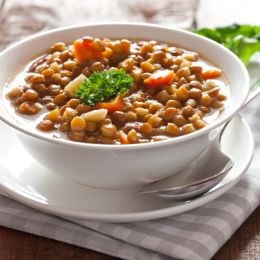The 7 Healthiest Protein Bars for Older Adults
Get a little protein assist from the snack aisle with these nutritionist-approved choices.

In a perfect world, you’d meet all your nutritional needs with made-from-scratch meals filled with whole food ingredients. But in the real world, you probably need a little help from packaged foods and snacks to ensure you’re getting the calories and nutrition you need.
Enter the protein bar. These convenient bars are shelf-stable, individually wrapped, and easy to keep in your bag or pocket, so you know you’ll have something protein-packed when hunger strikes.
Healthy eating and fitness go together! SilverSneakers classes and events are happening daily at participating gyms, online through SilverSneakers LIVE, and at community centers near you. Activate your free online account to get started.
Why Protein Is Important for Older Adults
Protein is a crucial nutrient for older adults because it guards against age-related muscle loss (sarcopenia), says Caroline Cederquist, M.D., medical director at Cederquist Medical Wellness Center in Naples, Florida. “Protein helps preserve muscle mass,” she explains.
The problem is, many older adults aren’t getting enough protein. Dr. Cederquist says it’s too easy for empty-nesters to resort to the kind of quick, easy meals and snacks that are higher in carbohydrates. “They often reach for toast and tea, oatmeal, or pasta, all of which are lower in protein,” says Dr. Cederquist.
The recommended daily allowance of protein is 0.36 grams per pound of body weight — or about 54 grams for a 150-pound person. But Dr. Cederquist and other medical experts recommend higher amounts for older adults. In one American Journal of Physiology—Endocrinology and Metabolism study, adults ages 52 to 75 improved their muscle health by following a diet containing 1.5 grams of protein per kilogram of bodyweight per day. That’s roughly twice the current RDA.
“I suggest a minimum of 80 to 100 grams of protein per day for women. For men, I suggest 100 to 140 grams,” says Dr. Cederquist. “This is more than the recommended daily allowance, but I think it’s what older adults really need to maintain muscle mass.”
Recommended reading: How Much Protein Should You Eat Each Day?
Protein Bars Help You Get Those Grams
Michelle Hawksworth, R.D., registered dietitian for Muscle and Brawn, agrees. “The best brands of protein bars can cater to the health needs of older adults while allowing them to enjoy the journey as well,” she says.
Not all bars are created equal, however. According to Dr. Cederquist, many options are little more than candy bars. Hawksworth warns that some have a chalky taste and texture that can make them unpleasant to eat. The first step in choosing a protein bar is carefully reading the label.
“I like bars that have plenty of protein — ideally 15 grams or close to it,” says Dr. Cederquist. She also recommends choosing bars with 20 net carbs or less. A net carb is the grams of total carbohydrates minus the grams of fiber. Protein bars best viewed as a midday or post-workout snack, not a meal replacement. As such, look for bars under 300 calories, ideally closer to 200, says Dr. Cederquist. Aim for less than 8 grams of added sugar as well.
That said, it’s important to find a bar you really enjoy. “The best protein bar brands have good macronutrients — protein, carbohydrates, and fats — and use high-quality ingredients that don’t compromise flavor,” says Hawksworth.
There are hundreds of brands of protein bars onn the market, so if you are trying to find the one for you, start by taking a look at these seve healthiest protein bar choices, all of which come recommended by these nutrition experts. Most are available at large grocery stores, “big box” chains, and specialty nutrition stores. You can also purchase them online.
Protein Bar #1: Alani Nu Protein Bars
Protein per bar: 16 grams
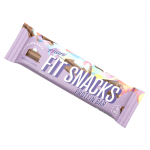
Hawksworth gives Alani Nu protein bars a gold star for both texture and taste — not too chewy, no pasty aftertaste, she says. Flavor options include rocky road, caramel crunch and peanut butter and jelly.
“They taste similar to a candy bar, but it’s composed of high-quality ingredients that are low in calories and sugar,” she says.
Protein Bar #2: Aloha Plant-Based Protein Bars
Protein per bar: 14 grams
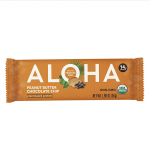
Aloha organic bars are vegan, contain 6 to 10 grams of fiber, and come in tempting flavors like coconut chocolate almond and maple sea salt. There’s even a chocolate espresso flavor that has a kick of caffeine.
The protein comes from nuts, brown rice, and pumpkin seeds. “I like that these are gluten-free, packed with protein, and contain plenty of fiber,” says Dr. Cederquist.
Protein Bar #3: Barebells Protein Bar
Protein per bar: 20 grams

Barebells protein bars have a bit more calories than others (190–210), but more calories aren’t always a negative thing, notes Hawksworth. Some older adults experience a decrease in appetite and need more calorie-dense choices, she says.
Hawksworth also likes that they have no added sugar and plenty of protein “to help you stay full and energized for a while. They also offer vegan-friendly options made from plant-based protein, so everyone gets to enjoy.” Flavor choices include hazelnut-and-nougat, salty peanut, and cookies and cream.
Recommended FREE SilverSneakers On-Demand Class: Shopping Habits for a Healthy Diet
Protein Bar #4: Built Bars
Protein per bar: 16–19 grams
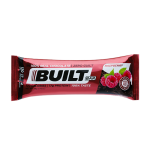
Built bars are a good high-protein, low-calorie snack between meals, says Hawksworth. They offer a wide variety of tempting flavors to choose from — everything from raspberry to molten lava cake. And bars range from 130–180 calories each.
Subscribe to our newsletter
It's quick and easy. You could be one of the 13 million people who are eligible.
Already a member? Click to discover our 15,000+ participating locations.
Follow Us
Protein Bar #5: Quest Protein Bar
Protein per bar: 20 grams
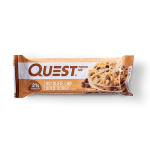
Compared to other protein bars, Quest bars are lower in sugar (1–2 grams) but not lacking in sweetness thanks to the addition of stevia, a natural sugar-free sweetener. Lemon cake is one of the newer flavor options to a lineup that already includes such dessert hits as birthday cake and chocolate-sprinkled doughnuts.
Another checkmark in the plus column is the fiber makeup (13–17 grams), according to Dr. Cederquist, “The fiber in this bar is soluble corn fiber, which many people tolerate very well without the bloating that other forms of fiber can sometimes cause.”
Protein Bar #7: NuGo Slim Bar
Protein per bar: 16–17 grams
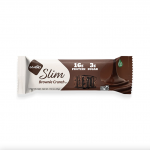
NuGo Slim soy-based bars contain between 6 and 7 grams of fiber, 6 to 7 net carbs, and just 3 grams of sugar. There are even four vegan varieties in flavors like espresso and toasted coconut.
“These are great for anyone who wants a gluten-free protein bar,” says Dr. Cederquist.
Protein Bar #7: Silver Cuisine by Bistro MD Chewy Chocolate Peanut Butter Bar
Protein per bar: 15 grams

Dr. Cederquist helped create this 220-calorie Silver Cuisine bar and says she likes it for its minimal processing and straightforward ingredients — like organic chocolate and peanut butter. Fiber (3 grams) comes from gluten-free oats, chia seeds, and flax seeds.
See our source:
Study on older adult protein recommendations: American Journal of Physiology—Endocrinology and Metabolism
Check Your SilverSneakers Eligibility Instantly
SilverSneakers members can go to thousands of nationwide gyms and fitness locations, plus take SilverSneakers LIVE online classes that are designed for all fitness levels and abilities. If you have a Medicare Advantage plan, it may include SilverSneakers — at no additional cost. Check your eligibility instantly here.
Already a member? Get your SilverSneakers member ID and exclusive fitness and wellness content by activating your online account here.
Not eligible for SilverSneakers? You can still get 200+ free SilverSneakers On-Demand videos and stay in touch with us by creating your online account.



